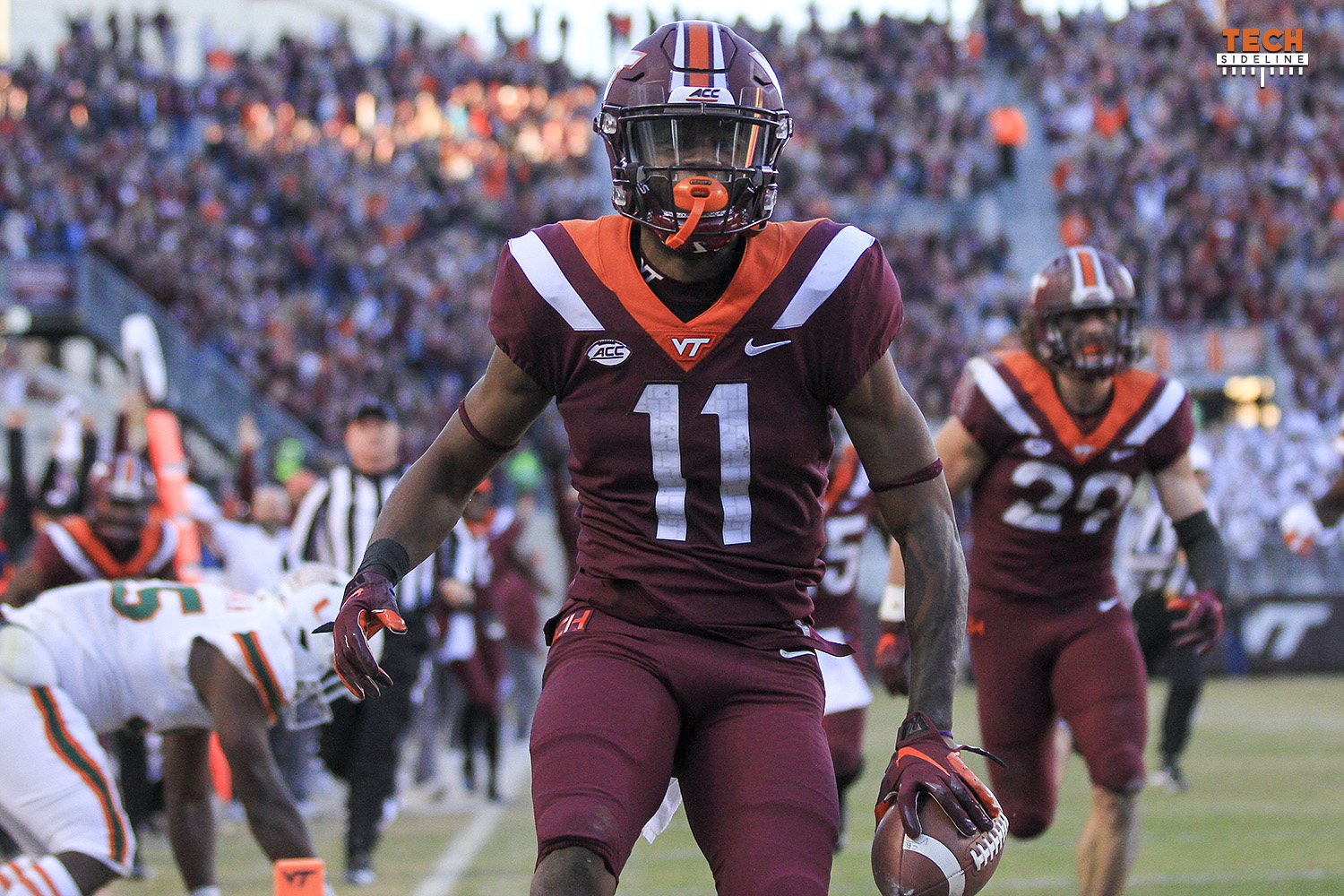
Previous Parts to the Series
- Play Identification
- Offensive Themes
- More Themes
- Pass Protection
- Run Blocking
- Inside Run Plays
- Outside Run Plays
- Perimeter Runs
- Quick Game
- QB Movement
DISCLAIMER: These articles are based entirely on what Tech has either discussed publicly or shown in games.
Today we’re looking at the Hokies’ longer-developing routes; if using Tech’s terminology, Drop-Back passes are the main item, with Play-Action and Double-Move often built in. Because they take longer to develop than most plays, these can be hard to identify when watching from home or even in the stadium. For old under-center rules, many of these calls would be five- or seven-step drops, though from the gun they’re usually two or three. Because the QB is holding the ball longer, many of the routes run off the TV screen or out of your peripheral vision, and you only see their results after the ball is thrown.
Drop-back passes are designed to synch-up with the QB’s steps, with the primary read generally breaking to get open roughly as the quarterback’s last step is finished. This means main routes are longer, but that doesn’t necessarily mean they’re deeper, as we’ll see the Hokies like running receivers across the field as well as down it. This extra time can make using play-action more desirable. Play-action is designed to bring defenders closer to the LOS, and since the QB is dropping deep into the pocket anyways, a little fake can be a big help. Sometimes play-action draws in linebackers, preventing them from interfering with balls thrown in front of the safeties, and sometimes it freezes the safeties and allows receivers to run behind them. My feeling is that most of time the play-action calls are counterparts to identical drop-back calls where the back(s) stays in to block or release on routes.
The Hokies put their double-move calls into their own category, though since these are all deep, drop-back calls, we can lump them in here. Additionally, these calls are almost certainly built off calls listed in the same game’s drop-back or quick game category, e.g., if the Hokies are using a post-corner route in a double-move call, there’s likely a regular post route in a call from the same look in the Drop-Back category. Since they’re often go-for-broke deep-ball shots, the Hokies and many other offenses will pair these plays with max-protection. Max-protection generally means only one or two receivers are going into a route, leaving everyone else in to block. I think this is generally the case for the Hokies, though they might include their unbalanced sets here, too, which we’ll look at in a sec. They’ll also generally involve play-action, since it often helps to get the linebackers out of the way or the safeties hesitating a step.
...Subscribe to read full story
Tired of low effort articles and clickbait? So are we. Subscribe to read great articles written by a full-time staff with decades of experience.
Already a subscriber? Login Here



